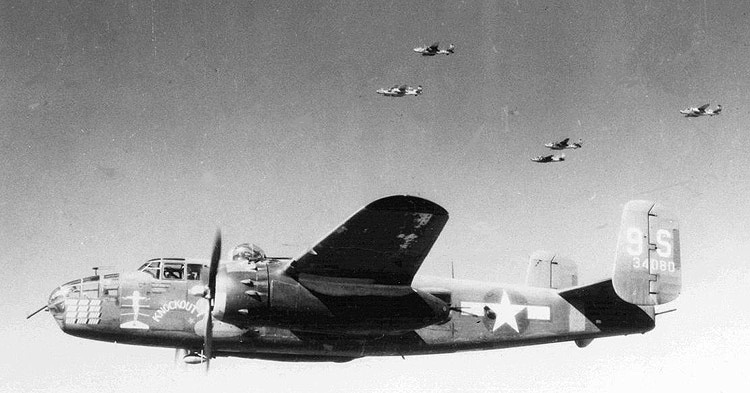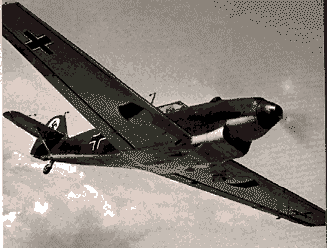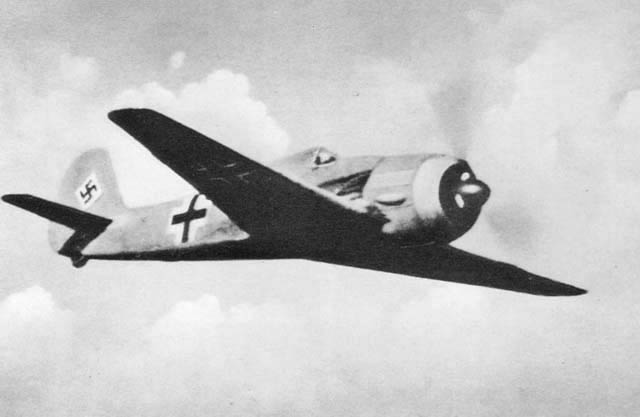 DIARY OF A P-38
DIARY OF A P-38
COMBAT PILOT
By Pat Brown
Prologue and editing by Ron Fox
DIARY OF MY COMBAT MISSIONS
25 Aug 1943 I was assigned to the 12th Air Force, 82nd Fighter Group, 96th Fighter Squadron (“The Slugging Jackrabbits”). In the following write-ups you will often come across the word ADORIMINI. This is the title of our book ‘The History of the 82nd Fighter Group in World War II.” ADORIMINI is Latin, and literally means “Up and At Em’. A copy of this book is in the possession of Pat and Lavada Brown and is referenced after most diary entries. — Pat Brown
Combat Mission #01 (Medium Bomber Escort)
Sept. 02, 1943. Based at Grombalia on Cape Bonn (about 20 miles East of Tunis, Tunisia, North Africa). See ADORIMINI reference below for further details. This was later referred to as the roughest combat mission ever flown by the 82nd. Fighter Group.
Target: Cancello Marshalling (large railroad terminal) Yard near Naples, Italy. This turned out to be the most violent and disastrous mission in the history of the 82nd. Fighter Group. It was my first combat mission and certainly the most dangerous. Here is the way I wrote it up after my arrival back at our base in Grombalia
NOTE: Our Group received “The Presidential Unit Citation” for this Mission. War Department, Washington, DC, General Order No. 66, 15 Aug 1944.
“Took off at 1100 hours on Sept. 2 with 72 P-38’s, and I flew in the #2 position. .jpg) We were to escort 72 B-25’s
We were to escort 72 B-25’s  who were to bomb the Marshalling Yards at Cancello, Italy near the Naples area. We flew out on the deck (less than 50 feet altitude) so as to obtain the element of surprise. We began our climb to 14,000 feet one-half hour before target time. As we neared the target area we saw several enemy fighters above and behind us. At the target area the flak was very heavy, intense, and accurate. We had to weave quite violently to evade being hit. As we came out of the target area we were jumped by the enemy fighters that were ME-109’s
who were to bomb the Marshalling Yards at Cancello, Italy near the Naples area. We flew out on the deck (less than 50 feet altitude) so as to obtain the element of surprise. We began our climb to 14,000 feet one-half hour before target time. As we neared the target area we saw several enemy fighters above and behind us. At the target area the flak was very heavy, intense, and accurate. We had to weave quite violently to evade being hit. As we came out of the target area we were jumped by the enemy fighters that were ME-109’s  and FW-190’s.
and FW-190’s.  We fought with them all the way down to the deck out in the Bay of Naples. There were other enemy fighters that joined in with the first group, there was about 50 of them. As we headed out toward Sicily we continued to guard the B-25’s and engage the enemy fighters. A ME-109 on a head on pass shot out my canopy and most of my left vertical stabilizer. I may have damaged his aircraft , shooting back at him in passing. A few moments later our flight was attacked by 12 enemy fighters and they split us apart. An a ME- 109 came from the left and fired and hit my left engine and I had to feather it. I kept the plane on the deck and headed for Sicily the best I could. I used full throttle on the right engine in order to move away from the enemy fighters. The engine lasted about 9 minutes which allowed me to get within a few miles of Sicily. The engine blew up and I ditched. The British provided the air/sea rescue operation and they picked me up within an hour. They took me to Sicily and the next day I was flown hack to my base in Grombalia. As the rest of the squadron neared Sicily the enemy fighters broke off and headed back towards Naples (probably low on fuel). The actual fight lasted approximately 30 minutes. The Group lost eleven pilots and thirteen airplanes, while shooting down twenty four enemy airplanes. We lost Franche, Dennison, and Amberson who were classmates of mine and were also flying their first combat mission. I did not know the other pilots who were lost that day. A very bad battle, but we won. Total Flight Time 4:30.”
We fought with them all the way down to the deck out in the Bay of Naples. There were other enemy fighters that joined in with the first group, there was about 50 of them. As we headed out toward Sicily we continued to guard the B-25’s and engage the enemy fighters. A ME-109 on a head on pass shot out my canopy and most of my left vertical stabilizer. I may have damaged his aircraft , shooting back at him in passing. A few moments later our flight was attacked by 12 enemy fighters and they split us apart. An a ME- 109 came from the left and fired and hit my left engine and I had to feather it. I kept the plane on the deck and headed for Sicily the best I could. I used full throttle on the right engine in order to move away from the enemy fighters. The engine lasted about 9 minutes which allowed me to get within a few miles of Sicily. The engine blew up and I ditched. The British provided the air/sea rescue operation and they picked me up within an hour. They took me to Sicily and the next day I was flown hack to my base in Grombalia. As the rest of the squadron neared Sicily the enemy fighters broke off and headed back towards Naples (probably low on fuel). The actual fight lasted approximately 30 minutes. The Group lost eleven pilots and thirteen airplanes, while shooting down twenty four enemy airplanes. We lost Franche, Dennison, and Amberson who were classmates of mine and were also flying their first combat mission. I did not know the other pilots who were lost that day. A very bad battle, but we won. Total Flight Time 4:30.”
GDiary of a P-38 Pilot will be uploaded in serial form, accompanied by historical records and Pat Brown’s personal WWII photographs. Check back with us from time to time for more.
Copyright 2003 Bushpilot, all rights reserved